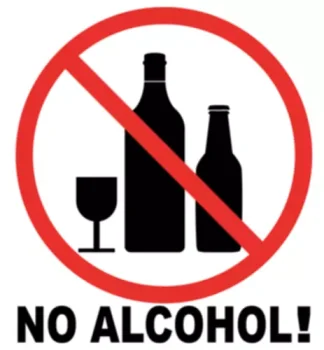As a result, those recovering from addiction can be harsh inner critics of themselves and believe they do not deserve to be healthy or happy. Once a person begins drinking or taking drugs, it’s hard to stop the process. Good treatment programs recognize the relapse process and teach people workable exit strategies from such experiences.
Work Toward a Balanced, Healthier Lifestyle
- The American Society of Addiction Medicine (ASAM) defines relapse as the recurrence of behavioral or other substantive indicators of active disease after a period of remission.
- It might mean entering, or returning to, a treatment program; starting, or upping the intensity of, individual or group therapy; and/or joining a peer support group.
- Returning to the «real world» after a stint in residential treatment can present many stressful situations.
Learning what one’s triggers are and acquiring an array of techniques for dealing with them should be essential components of any recovery program. Sometimes, you unknowingly begin taking steps toward a relapse weeks or months before actually drinking or using drugs. Certain thoughts, feelings, and events may trigger cravings and urges for drugs and alcohol, and, if not properly dealt with, may increase your chances of relapsing. If you’ve experienced a relapse in your journey to overcome habits of self-harm and addiction, don’t lose heart. Setbacks, though unwelcome, are a natural part of the process, so don’t let them derail the work you’ve already done. Instead, continue to apply healthy coping strategies like the CARESS process and be accountable to your support systems.
Develop a Relapse Prevention Plan
By strengthening the individual’s reasons for change, MI aims to improve motivation and commitment to recovery. Once you figure out your own triggers, think about something you can do instead of substance use for each one. Could you wrap up each day with a long walk instead of a cocktail?
Recognizing the Warning Signs of Relapse
In some situations, people must end relationships with others to fully recover and live healthy lives. For example, they may attend clinics that provide detox but not therapy. In many cases, 30 days of residential treatment and multiple months of therapy are required to prevent relapse. People who maintain sobriety what to do after a relapse for several weeks or months become much less tolerant than they were in the past. If they relapse and use the same dose that they used during active addiction, their risk of overdose is high. Friends and family members can recognize outward warning signs and try to intervene before a full relapse occurs.
What medications are available for people with relapsing-remitting multiple sclerosis?
In particular, cognitive behavioral therapy (CBT) can help people overcome the fears and negative thinking that can trigger relapse. If you have a history of self-harm or relapse, there are key emotional and behavioral warning signs that can indicate it could happen again. Personally, you may be struggling with loneliness or experiencing social https://ecosoberhouse.com/ isolation. You may begin to lose interest in the activities you once enjoyed. You may start having consistent feelings of worthlessness or hopelessness about your future circumstances, leading to increased anxiety or depression. Or you may even experience invasive thoughts about self-harm or begin to romanticize your former addictions.
Living your best life
- Once this happens, it may not be easy to control behavior or stop using.
- In the case of severe depression, you likely have also lost interest in things you used to enjoy.
- While it is a common part of the recovery process, it can lead to dangerous behaviors that may harm both the relapsing individual and their loved ones.
- Often, this stage accompanies cravings and intrusive thoughts that convince you the bad effects of the substance you abused weren’t that bad.
By making changes in your lifestyle, relationships, and priorities, you may be able to reduce the number of stressful situations in your life. By doing this, you will be reducing the likelihood of stress triggering a relapse. Consider incorporating mindfulness or meditation into your daily routine. Building and maintaining a support network is equally important, providing encouragement and understanding from caring individuals. Therapy can offer a space for individual growth and the development of coping strategies, which in turn can improve interpersonal relationships. Choosing the right therapist after a relapse is crucial for a successful recovery journey.
Core Components Of Relapse Prevention Treatment
- Psychologically, relapse often involves a complex interplay of emotions, including guilt, shame, and fear of judgment, which can exacerbate the cycle of addiction if not properly addressed.
- Ferentz says that it’s important to give the client some alternatives early on in the process.
- This process is not just about damage control; it’s about understanding what led to the relapse and how to strengthen the strategy to prevent future setbacks.
- In addition to seeking professional treatment, you might consider joining a 12-step program or other mutual support groups.
- Engaging in physical and mental well-being activities, such as mindfulness, exercise, and positive self-talk, can help manage stress and cravings.
- It involves identifying and managing situations, thoughts, and emotions that could trigger a return to the unwanted behavior.
- Relapse prevention is a strategy designed to help individuals maintain their progress in overcoming addiction or other harmful behaviors.
AWARD WINNING PRODUCE
Order Online
Lorem ipsum dolor sit amet, consectetur adipiscing elit. Pellentesque vestibulum aliquam cursus. Mauris molestie aliquam urna. Curabitur nec eleifend risus. Integer eget libero sed elit pharetra ultricies eu in augue. Integer eget libero sed elit pharetra ultricies eu in augue.







